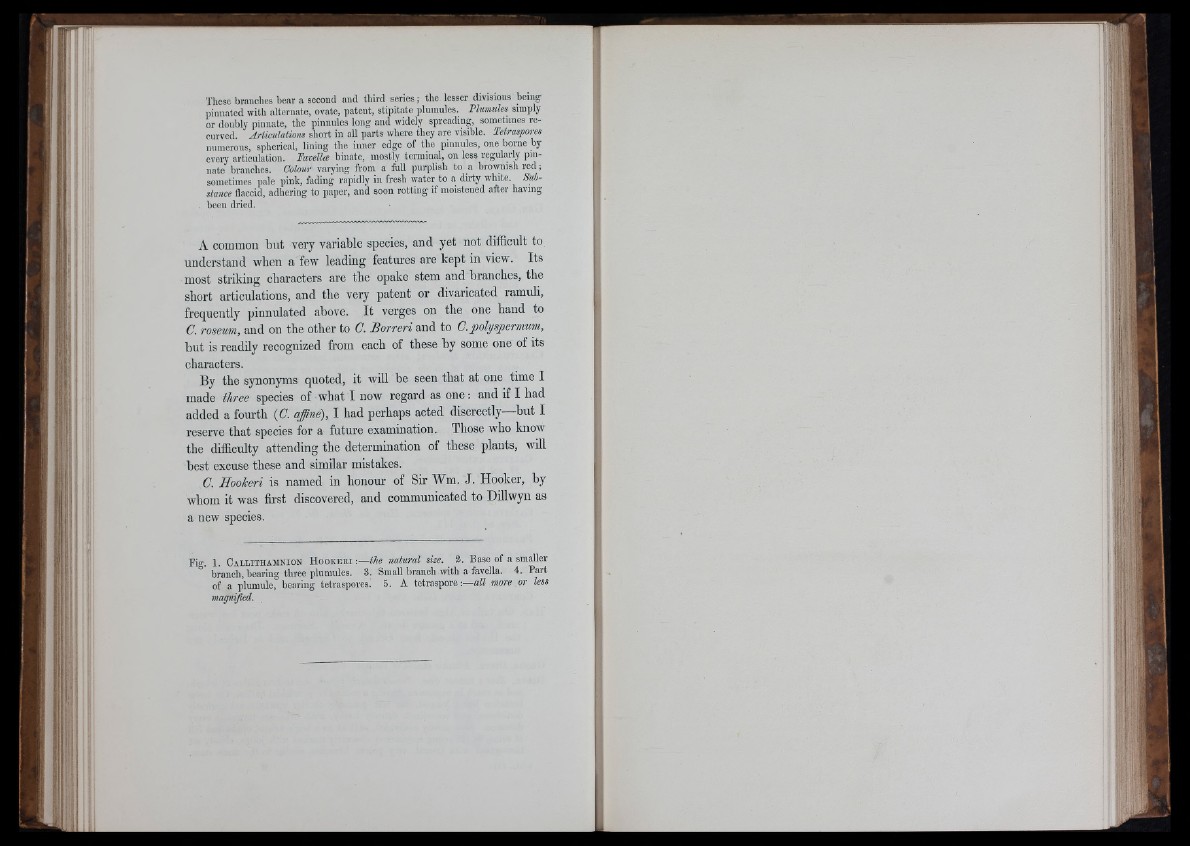
These branches bear a second and third series ; the lesser divisions being
ninnated with alternate, ovate, patent, stipitate plumules. Plumules simply
or doubly pinnate, the pinnules long and widely spreading, sometimes recurved.
Articulations short in all parts where they are visible. Tetraspores
numerous, spherical, lining the inner edge of the pinnules, one borne by
every articulation. Favellæ binate, mostly terminal, on less regularly pinnate
branclies. Colour varying from a full purplish to a brownish red ;
sometimes pale pink, fading rapidly in fresh water to a dirty white. Substance
flaccid, adhering to paper, and soon rotting if moistened after having
. been dried.
-
A common but very variable species, and yet not difficult to
understand when a few leading featiu’es are kept in view. Its
most striking characters are the opake stem and branches, the
short articulations, and the very patent or divaricated ramuh,
frequently pinnulated above. It verges on the one hand to
C. roseum, and on the other to C. Borreri and to C. polyspermum,
but is readily recognized from each of these by some one of its
characters.
By the synonyms quoted, it will be seen that at one time I
made tliree species of what I now regard as one : and if I had
added a fourth {C. affine), I had perhaps acted discreetly—but I
reserve that species for a future examination. Those who know
the difficulty attending the determination of these plants, wdl
best excuse these and similar mistakes.
C. Hookeri is named in honour of Sir Wm. J. Hooker, by
whom it was first discovered, and communicated to Dillwyn as
a new species.
Fio-. 1. Ca l l ith am n io n H o o k e r i :—the natural size. 2. Base of a smaller
° branch, bearing three plumnles. 3. Small branch with a favella. 4. Part
of a plumule, bearing tetraspores. 5. A tetraspore:—«« more or less